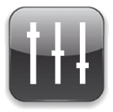Ignited by hot wire HWI
Laboratory > Electricals
| Hot Wire Ignition (HWI) | |
The HWI test (hot wire ignition) is used as one of the specifications for insulation materials. This classifies the products more finely in terms of their flammability. An overcurrent caused by eg. A short circuit is simulated, which causes a cable (coil, power cable) to shine. Under IEC 60695, the test is carried out at temperatures of 550 ° C, 650 ° C, 750 ° C, 850 ° C and 960 ° C. The test determines whether the material is ignited or continues to shine (test time 30 seconds ). The temperature (+ 25K) at which the test is passed is specified. On the other hand, under the UL 746A standard, the moment at which the test sample is turned on is indicated. Test procedure: In the so-called hot wire ignition test (HWI) according to ASTM D 387416, an electrically heated resistance wire is wrapped around a horizontally arranged bar specimen. This simulates a source of ignition. resulting from the overheating of the cables, especially in coils or transformers. The moment the sample is turned on (0 to 120 seconds) serves as the evaluation criterion for the classification. Performance is expressed as the average standard for burning samples without ignition. The samples are wrapped with the resistance of a specific level of electrical energy. Ignition categories PLC 0 to 5 (performance level categories) According to UL 746 A, Section 3117 | |
Performance (PLC) | |
To avoid an excessive level of implicit precision and bias, the performance of the material for various tests are recorded as performance level (PLC) categories based on the test of the average results (instead of recording the exact numerical results) |  |
